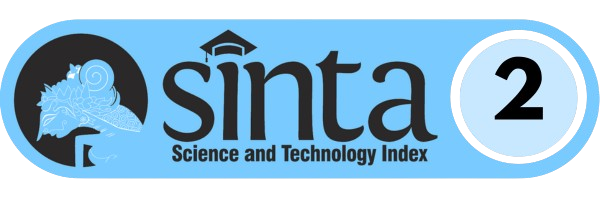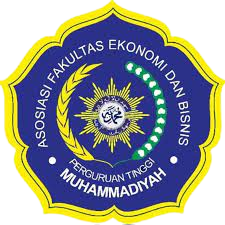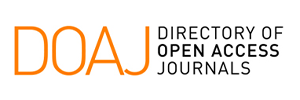Kangaroo Market Phenomenon: Identification and Impact on Indonesia’s Economic Growth
DOI:
https://doi.org/10.24269/ekuilibrium.v19i2.2024.pp289-308Abstract
The stock market holds a crucial role in a country's economy, including Indonesia. As an indicator, the Jakarta Composite Index (JCI) experiences volatility alongside changes in the Indonesian economy. The presence of a kangaroo market in JCI returns can pose a risk of future economic slowdown, making it crucial for monetary authorities to intervene to stabilize the stock market. Therefore, this study identifies the kangaroo market phenomenon, structural economic changes, and the impact of the kangaroo market phenomenon on Indonesia's economic growth. The study focuses on many variables, including JCI returns, kangaroo market, and economic growth from Q3 1995 to Q4 2023. By using the Hodrick-Prescott Filter to define a kangaroo market as JCI returns that lack a deterministic trend, have high volatility, and deviate by one standard deviation from their volatility trend, the results show that most kangaroo phenomena occur during undervaluation. Following the kangaroo market phenomenon, Indonesia's economy underwent five structural changes based on the multiple breakpoint test. Using dynamic linear regression, the overvaluation kangaroo phenomenon negatively affects Indonesia's economic growth, while the undervaluation kangaroo phenomenon has no impact but shows a positive direction.
References
Andrews, D. W. (1993). Tests for Parameter Instability and Structural Change with Unknown Change Point. Econometrica, 821-856.
Aven, T. (2015). Implications of Black Swans to the Foundations and Practice of Risk Assessment and Management. Reliability Engineering & System Safety, 83-91.
Babatunde, O. A. (2013, Maret ). Stock Market Volatility and Economic Growth in Nigeria. International Review of Management and Business Research (1980-2010), 2, 201-209.
Baltagi, B. H. (2008). Econometric Analysis of Panel Data (3 ed.). Great Britain: John Wiley & Sons Ltd.
Bollerslev, T. (1986). Generalized Autoregressive Conditional Heteroscedasticity. Journal of Econometrics, 307-327.
Browning, E. S. (2007, Oktober 15). Exorcising Ghosts of Octobers Past. Retrieved from The Wall Street Journal: https://www.wsj.com/articles/SB119239926667758592?mod=mkts_main_news_hs_h
Carter, C. A., Rausser, G. C., & Smith, A. (2011). Commodity Booms and Busts. Annual Review of Resurce Economics, 3, 87-118. doi:https://doi.org/10.1146/annurev.resource.012809.104220
Chikwira, C., & Mohammed, J. I. (2023). The Impact of the Stock Market on Liquidity and Economic Growth: Evidence of Volatile Market. Economies, 11(6), 1-19.
Chow, G. C.-C. (1960). Tests of Equality between Sets of Coefficients in Two Linear Regressions. Econometrica, 28, 591-605.
Clarke, R. C., & Statman, M. (1997). Bullish or Bearish? Financial Analysts Journal, 63-72.
Dabwor, D. T., Iorember, P. T., & Danjuma, S. Y. (2020). Stock Market Returns, Globalization and Economic Growth in Nigeria: Evidence from Volatility and Cointegrating Analyses. Wiley, 1-9. doi:https://doi.org/10.1002/pa.2393
Danielsson, J., Valenzuela, M., & Zer, I. (2018, Januari). Learning From History: Volatility and Financial Crises. The Review of Financial Studies, 2774-2805.
Darmadji, T., & Fakhruddin, H. M. (2008). Pasar Modal Indonesia. Jakata: Salemba Empat.
Eliza. (2013, Mei). Hubungan Nilai Intrinsik Suatu Saham Terhadap Harga Pasar Saham Tersebut. Jurnal Ekonomi, 4, 29-37.
Fortuna, B. (2014). Hubungan antara Indeks Harga Saham dengan Indikator Makro Ekonomi: Kajian Teori. Jurnal Ilmiah Mahasiswa FEB , 1-9.
Gujarati, D. N. (2004). Basic Econometrics (4 ed.). New York: McGraw-Hill Companies.
Hasyim, A. I. (2016). Ekonomi Makro. Jakarta : Kencana.
Hodrick, R. J., & Prescott, E. C. (1997). Post-war US business cycles: An empirical investigation. Journal of Money, Credit, and Bank, 1-16.
Iriana, R., & Sjoholm, F. (2001). Indonesia’s Economic Crisis: Contagion and Fundamentals. Working Paper(134), 1-33.
Jain, C. (2020, Januari 30). Heard of Kangaroo Market? Heard of Kangaroo Market?, hal. 1.
Jogiyanto, H. (2010). Teori Portofolio dan Analisis Investasi (7 ed.). Yogyakarta: BPFE.
Kamath, A. (2022, Juli 07). You have heard of a bull or bear stock market, but what is a kangaroo market? Diambil kembali dari dailyO: https://www.dailyo.in/wallet/you-have-heard-of-a-bull-or-bear-stock-market-but-what-is-a-kangaroo-market-37231
Krieken, J. v. (2018). Volatility and Stock Market Crashes [Thesis]. Tilburg University, 1-46.
Kusuma, P., & Yuniasih, A. F. (2021). Pengaruh Sektor Tersier terhadap Pertumbuhan Ekonomi Kawasan Barat dan Timur Indonesia. Seminar Nasional Official Statistics 2021, 782-791.
Makkulau, A. R., & Yuana, I. (2021). Penerapan Analisa Fundamental dan Technical Analysis Sebagai Upaya Dalam Meningkatkan Keinginan Investasi Mahasiswa di Pasar Modal Syariah . YUME : Journal of Management , 4(3), 165-180.
Mankiw, N. G. (2013). Macroeconomics (8 ed.). New York: Worth.
Manurung, A. H. (2012). Bubbles Prices: Money Market, Stock, and Property. SESPIBI (hal. 1-15). Jakarta: financialbisnis.com.
Meidawati, N. (2004). Pengaruh Pemilihan Umum Legislatif Indonesia Tahun 2004 terhadap Return Saham dan Volume Perdagangan Saham LQ-45 di PT Bursa Efek Jakarta (BEJ). Sinergi: Kajian Bisnis dan Manajemen, 7(1), 89-101. doi:https://doi.org/10.20885/js.v7i1.906
Melani, A. (2021, Juli 26). BEI Sesuaikan Fitur Baru di JATS Mulai 6 Desember 2021, Ini Alasannya. Diambil kembali dari LIPUTAN 6: https://www.liputan6.com/saham/read/4615934/bei-sesuaikan-fitur-baru-di-jats-mulai-6-desember-2021-ini-alasannya?page=3
Melati, I., & Kurniawan, M. L. (2023). Money Demand Analysis through Business Cycle in Indonesia. Ekuilibrium, 18(2), 203-212.
Minsky, H. P. (1986). Stabilizing An Unstable Economy. New York: McGrawHill.
Mise, E., Kim, T. H., & Newbold, P. (2005). On suboptimality of the Hodrick Prescott Filter at time series endpoints. Journal of Macroeconomics, 53-67.
Mitro, T. (2022). Overconfidence and Retail Investors: The Case of a ‘Kangaroo’ Market [Thesis]. Charles University, 1-91.
Nicole, A. (2024, Maret 15). Kangaroos in Finance: Definition, Market Representation, and Bond Market Implications . Diambil kembali dari supermoney: https://www.supermoney.com/encyclopedia/kangaroo-market
Nizar, M. A. (2011). Tourism Effect on Economic Growth in Indonesia. Munich Personal RePec Archive , 1-25.
Nugraha, G. P. (2007). Analisis Pengaruh Perkembangan Pasar Modal Terhadap Pertumbuhan Ekonomi Indonesia [Skripsi]. Departemen Ilmu Ekonomi Fakultas Ekonomi dan Manajemen IPB, 1-134.
Nugroho, R. A. (2024, Februari 05). BPS Ungkap Penyebab Ekonomi 2023 Lebih Rendah dari 2022. Diambil kembali dari CNBC : https://www.cnbcindonesia.com/news/20240205121957-4-511925/bps-ungkap-penyebab-ekonomi-2023-lebih-rendah-dari-2022
OJK. (2023, Juli 20). Kebijakan dalam Menjaga Kinerja dan Stabilitas Pasar Modal dalam Kondisi Pasar yang Berfluktuasi secara Signifikan. Diambil kembali dari OJK: https://ojk.go.id/id/regulasi/Pages/Kebijakan-dalam-Menjaga-Kinerja-dan-Stabilitas-Pasar-Modal-dalam-Kondisi-Pasar-yang-Berfluktuasi-secara-Signifikan.aspx
Oktarina, D. (2015). Pengaruh beberapa indeks saham global dan indikator makroekonomi terhadap pergerakan IHSG. Journal of Business & Trading, 165.
Pakpahan, K. (2003, September 2). STRATEGI INVESTASI DI PASAR MODAL. Journal The WINNERS, 4, 139.
Pratiwi, Y. R. (2022, Februari 24). Pemulihan Perekonomian Indonesia Setelah Kontraksi Akibat Pandemi Covid-19. Diambil kembali dari Kemenkeu RI: https://www.djkn.kemenkeu.go.id/kpknl-banjarmasin/baca-artikel/14769/Pemulihan-Perekonomian-Indonesia-Setelah-Kontraksi-Akibat-Pandemi-Covid-19.html
Putri, R. N., & Mudakir, Y. B. (2019). Analisis Pengaruh Keterbukaan Ekonomi terhadap Pertumbuhan Ekonomi (Studi Kasus: ASEAN Tahun 2007-2017). Jurnal Dinamika Ekonomi Pembangunan, 2, 20-35.
Roubini, N. (2006). Why Central Banks Should Burst Bubbles. International Finance, 9, 87-107. doi:https://doi.org/10.1111/j.1468-
Rustiana, D., & Ramadhani, S. (2022). Strategi di Pasar Modal Syariah. Jurnal Ilmu Komputer, Ekonomi dan Manajemen (JIKEM), 2(1), 1578-1589.
Saputra, E., & Yuniarti. (2023, Mei). Dampak Fluktuasi Inflasi terhadap Perubahan Harga Saham (Studi pada Perusahaan Sektor Perbankan yang Listing di Bursa Efek Indonesia). Jurnal Ekonomi STIEP, 8, 1-5.
Sari, P. K., & Fakhruddin. (2016, November). Identifikasi Penyebab Krisis Moneter dan Kebijakan Bank Sentral di Indonesia: Kasus Krisis tahun (1997-1998 dan 2008). Jurnal Ilmiah Mahasiswa, 1(2), 377-388.
Setiawan, S. R. (2017, Oktober 9). Sinyal Kuat Kenaikan Suku Bunga AS di Desember 2017. Diambil kembali dari Kompas: https://ekonomi.kompas.com/read/2017/10/09/081633726/sinyal-kuat-kenaikan-suku-bunga-as-di-desember-2017
Sukirno, S. (2001). Pengantar Teori Makroekonomi. Depok: Rajawali Pers.
Sunariyah. (2011). Pengantar Pengetahuan Pasar Modal. Yogyakarta : UPP STIM YKPN.
Taleb, N. N. (2004, November). The Roots of Unfairness: the Black Swan in Arts and Literature. Journal of the International Comparative Literature Association, 1-7.
Tobin, J. (1966). Kebijakan Perekonomian Nasional. New Heaven: Universitas Yale.
Tretina, K. (2023, Juni 12). Bear Market Vs. Bull Market: What’s The Difference? Diambil kembali dari Forbes Advisor: https://www.forbes.com/advisor/investing/bear-market-vs-bull-market/
Usman, M., Riphat, S., & Ika, S. (1997). Peluang dan Tantangan Pasar Modal Indonesia Menghadapi Era Perdagangan Bebas. Jurnal Keuangan dan Moneter, 10.
Vauzi, M. R. (2022, Desember 12). Histori 1998 dan 2008, Serta Optimisme Pasar Modal Dalam Bayang-Bayang Resesi 2023 . Diambil kembali dari Emiten News : https://emitennews.com/news/histori-1998-dan-2008-serta-optimisme-pasar-modal-dalam-bayang-bayang-resesi-2023
Warsito, T. (2021, Oktober). Bagaimana Covid-19 Mengubah Struktur Perekonomian Kota Besar di Pulau Jawa? Ekuivalensi, 7(2), 398-413.
Wiranatakusuma, D. B., & Habibullah. (2024). Analyses of Relationship between Economic Growth and Zakat Distribution: Some Comparative Studies between Indonesia and Malaysia. Ekuilibrium, 19(1), 18-41.
Downloads
Published
How to Cite
Issue
Section
License
Retained Rights/Terms and Conditions of Publication
1. As an author you (or your employer or institution) may do the following:
- make copies (print or electronic) of the article for your own personal use, including for your own classroom teaching use;
- make copies and distribute such copies (including through e-mail) of the article to research colleagues, for the personal use by such colleagues (but not commercially or systematically, e.g. via an e-mail list or list server);
- present the article at a meeting or conference and to distribute copies of the article to the delegates attending such meeting;
- for your employer, if the article is a ‘work for hire’, made within the scope of your employment, your employer may use all or part of the information in the article for other intra-company use (e.g. training);
- retain patent and trademark rights and rights to any process, procedure, or article of manufacture described in the article;
- include the article in full or in part in a thesis or dissertation (provided that this is not to be published commercially);
- use the article or any part thereof in a printed compilation of your works, such as collected writings or lecture notes (subsequent to publication of the article in the journal); and prepare other derivative works, to extend the article into book-length form, or to otherwise re-use portions or excerpts in other works, with full acknowledgement of its original publication in the journal;
- may reproduce or authorize others to reproduce the article, material extracted from the article, or derivative works for the author's personal use or for company use, provided that the source and the copyright notice are indicated, the copies are not used in any way that implies RCEPM-LIPI endorsement of a product or service of any employer, and the copies themselves are not offered for sale.
All copies, print or electronic, or other use of the paper or article must include the appropriate bibliographic citation for the article's publication in the journal.
2. Requests from third parties
Although authors are permitted to re-use all or portions of the article in other works, this does not include granting third-party requests for reprinting, republishing, or other types of re-use. Requests for all uses not included above, including the authorization of third parties to reproduce or otherwise use all or part of the article.
3. Author Online Use
- Personal Servers. Authors and/or their employers shall have the right to post the accepted version of articles pre-print version of the article, or revised personal version of the final text of the article (to reflect changes made in the peer review and editing process) on their own personal servers or the servers of their institutions or employers without permission from Universitas Muhamamdiyah Ponorogo, provided that the posted version includes a prominently displayed Universitas Muhamamdiyah Ponorogo copyright notice and, when published, a full citation to the original publication, including a link to the article abstract in the journal homepage. Authors shall not post the final, published versions of their papers;
- Classroom or Internal Training Use. An author is expressly permitted to post any portion of the accepted version of his/her own articles on the author's personal web site or the servers of the author's institution or company in connection with the author's teaching, training, or work responsibilities, provided that the appropriate copyright, credit, and reuse notices appear prominently with the posted material. Examples of permitted uses are lecture materials, course packs, e-reserves, conference presentations, or in-house training courses;
- Electronic Preprints. Before submitting an article to an Ekuilibrium: Jurnal Ilmiah Bidang Ilmu Ekonomi, authors frequently post their manuscripts to their own web site, their employer's site, or to another server that invites constructive comment from colleagues. Upon submission of an article to Ekuilibrium: Jurnal Ilmiah Bidang Ilmu Ekonomi, an author is required to transfer copyright in the article to Economy Faculty Universitas Muhammadiyah Ponorogo, and the author must update any previously posted version of the article with a prominently displayed Economy Faculty Universitas Muhammadiyah Ponorogo copyright notice. Upon publication of an article by the Universitas Muhammadiyah Ponorogo, the author must replace any previously posted electronic versions of the article with either (1) the full citation to the work with a Digital Object Identifier (DOI) or link to the article abstract in Ekuilibrium: Jurnal Ilmiah Bidang Ilmu Ekonomi journal homepage, or (2) the accepted version only (not the final, published version), including the Economy Faculty Universitas Muhammadiyah Ponorogo copyright notice and full citation, with a link to the final, published article in journal homepage.
4. Articles in Press (AiP) service
Economy Faculty Universitas Muhammadiyah Ponorogo may choose to publish an abstract or portions of the paper before we publish it in the journal. Please contact our Production department immediately if you do not want us to make any such prior publication for any reason, including disclosure of a patentable invention.
5. Author/Employer Rights
If you are employed and prepared the article on a subject within the scope of your employment, the copyright in the article belongs to your employer as a work-for-hire. In that case, Economy Faculty Universitas Muhammadiyah Ponorogo assumes that when you sign this Form, you are authorized to do so by your employer and that your employer has consented to the transfer of copyright, to the representation and warranty of publication rights, and to all other terms and conditions of this Form. If such authorization and consent has not been given to you, an authorized representative of your employer should sign this Form as the Author.
6. RCEPM-LIPI Copyright Ownership
It is the formal policy of Economy Faculty Universitas Muhammadiyah Ponorogo to own the copyrights to all copyrightable material in its technical publications and to the individual contributions contained therein, in order to protect the interests of the Economy Faculty Universitas Muhammadiyah Ponorogo, its authors and their employers, and, at the same time, to facilitate the appropriate re-use of this material by others. Economy Faculty Universitas Muhammadiyah Ponorogo distributes its technical publications throughout the world and does so by various means such as hard copy, microfiche, microfilm, and electronic media. It also abstracts and may translate its publications, and articles contained therein, for inclusion in various compendiums, collective works, databases and similar publication.
7. Licensing Terms
Ekuilibrium is licensed under a Creative Commons Attribution-ShareAlike 4.0 International License.
Permissions beyond the scope of this license may be available at https://journal.umpo.ac.id/











